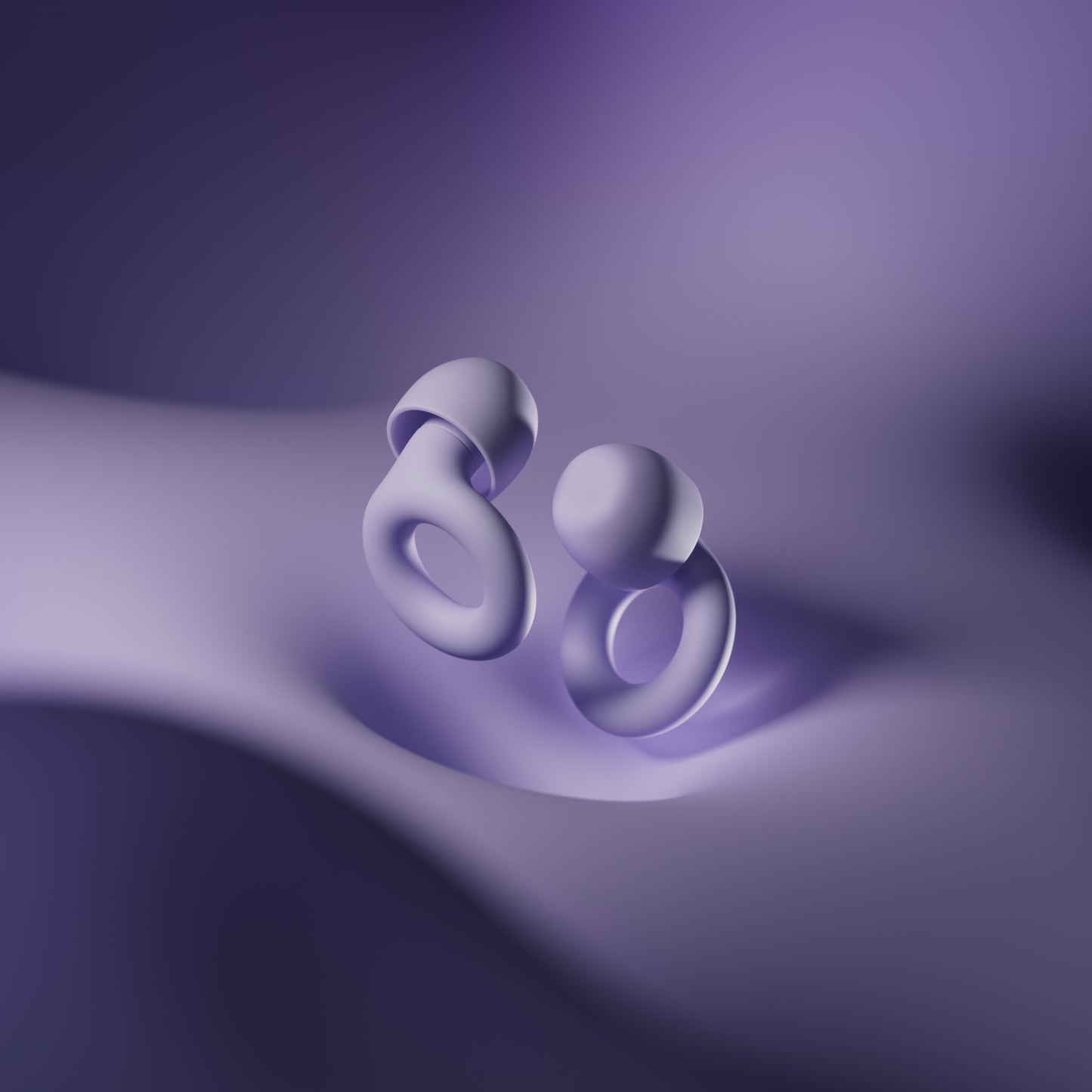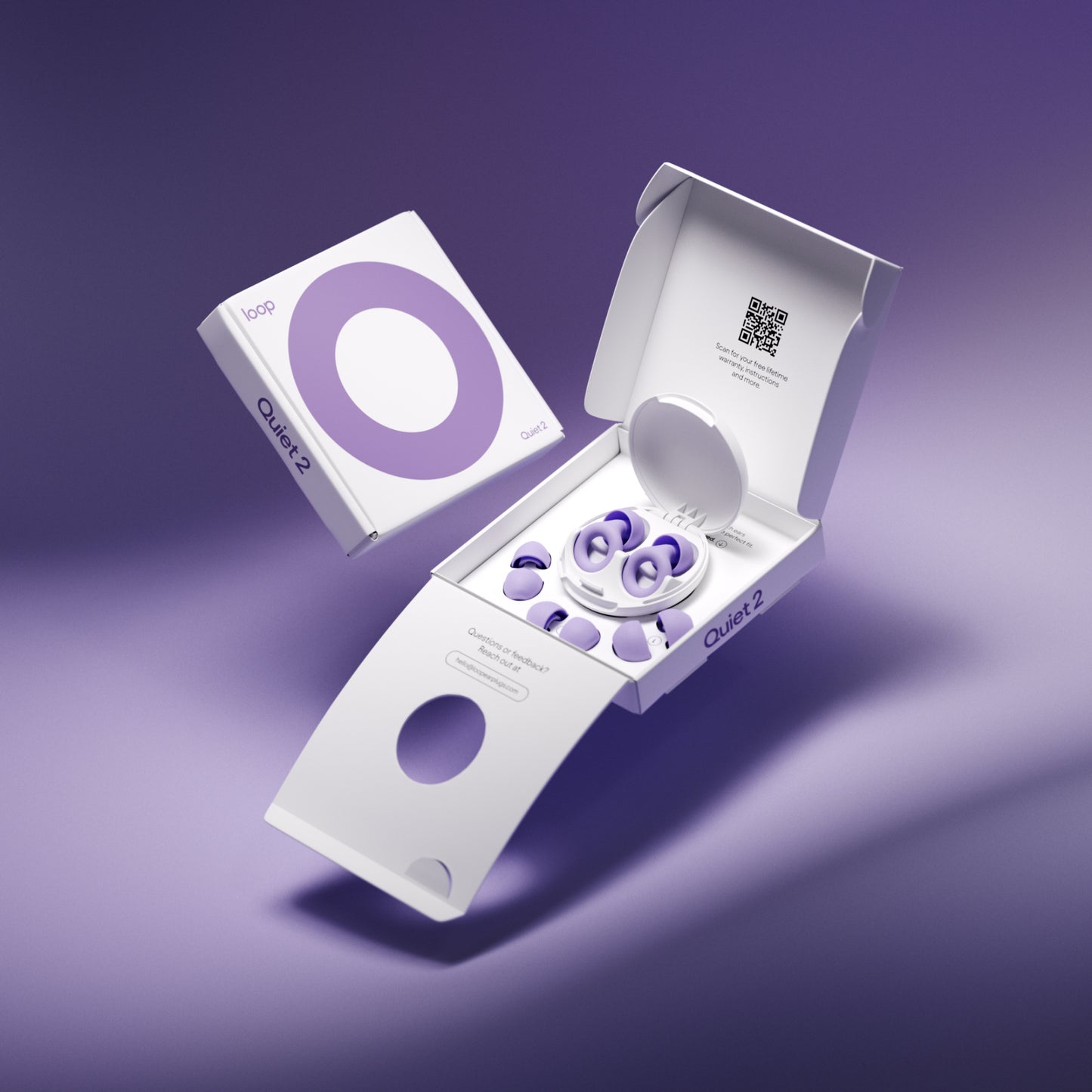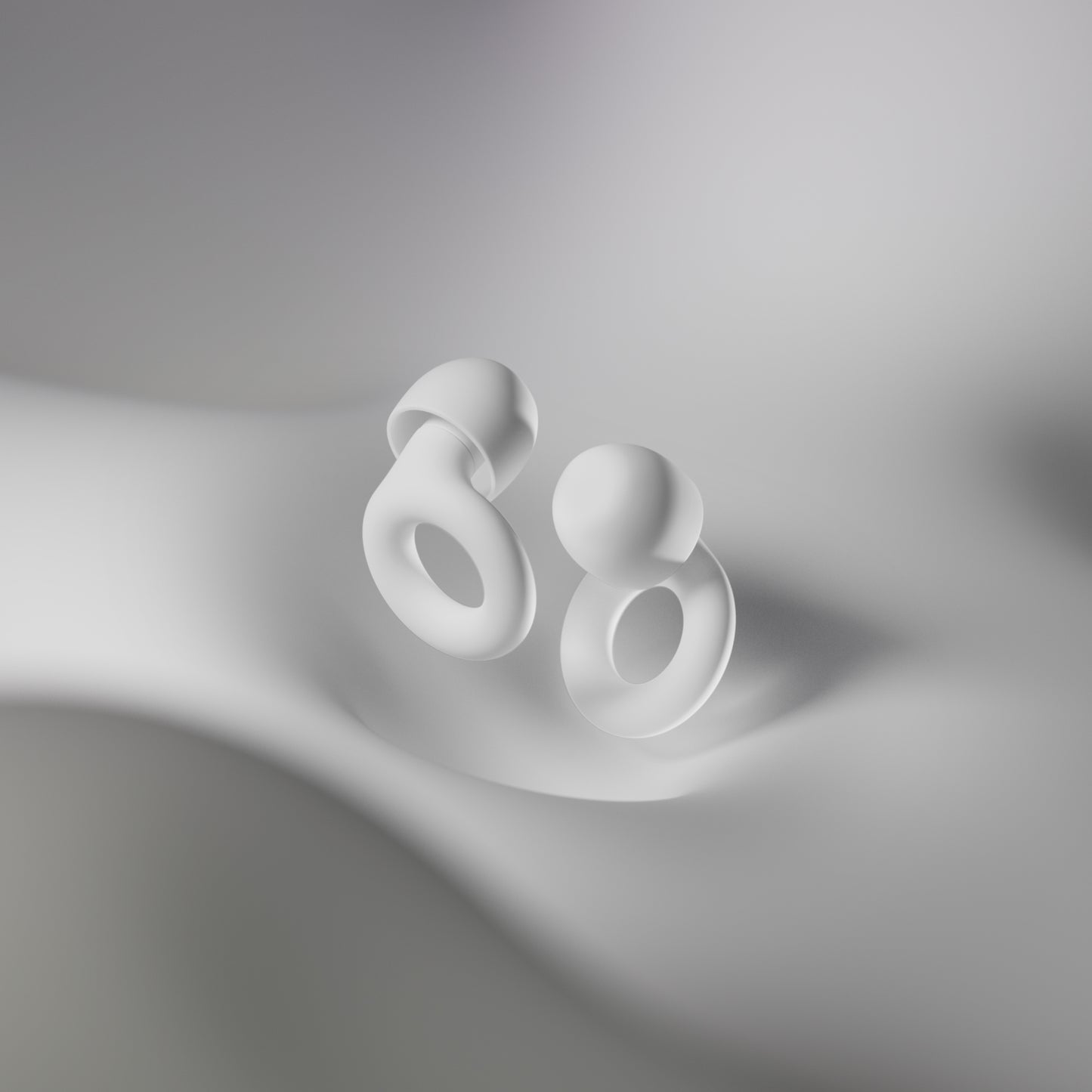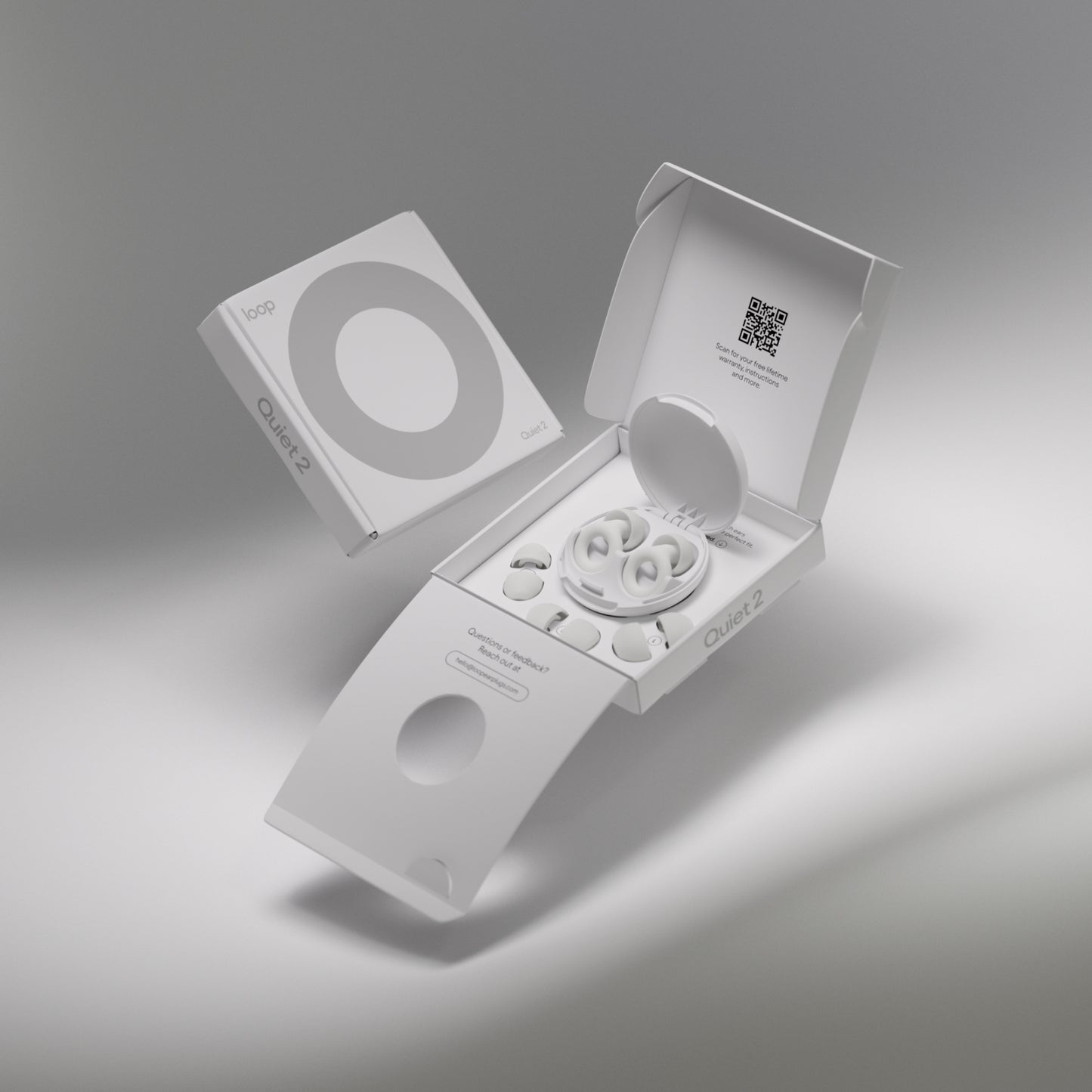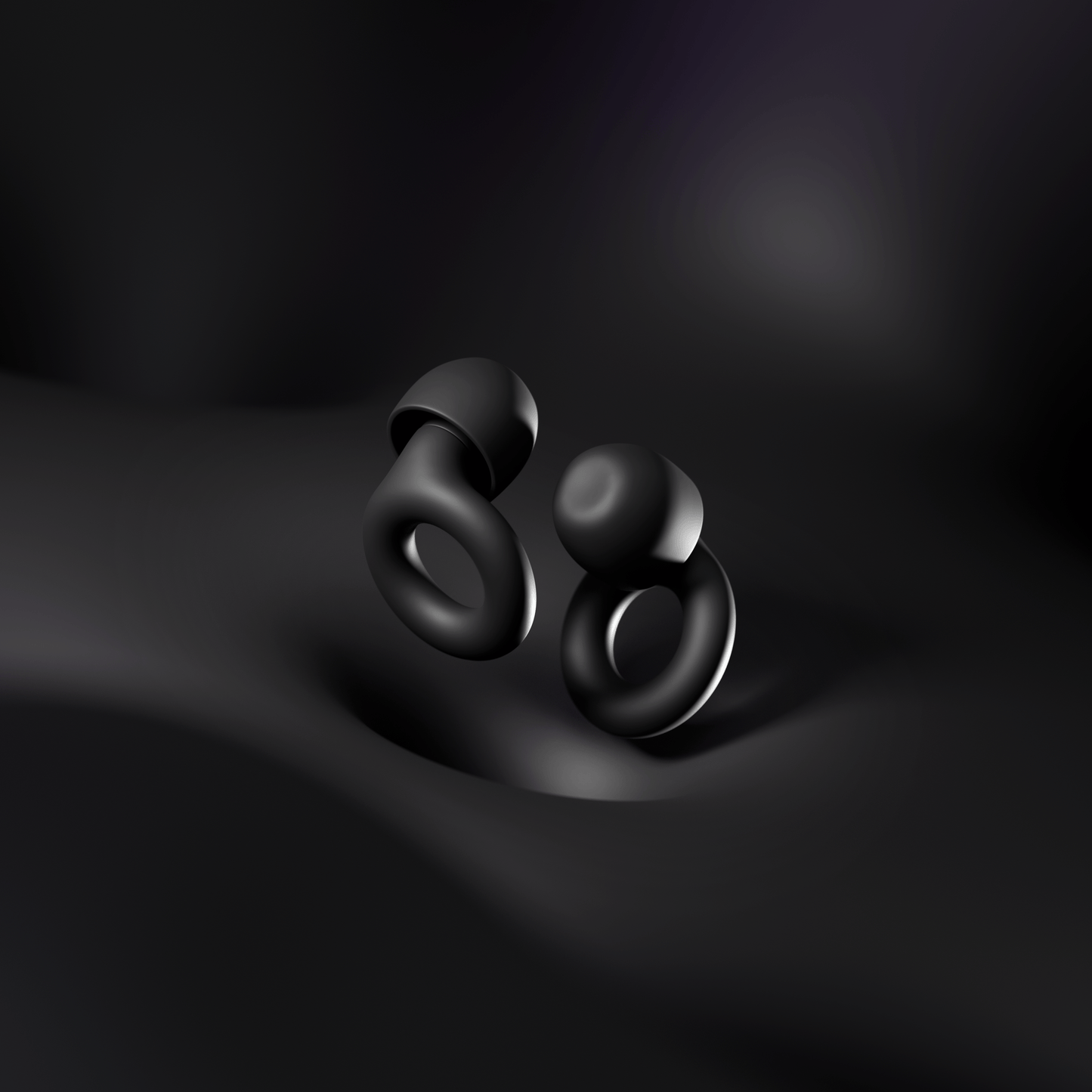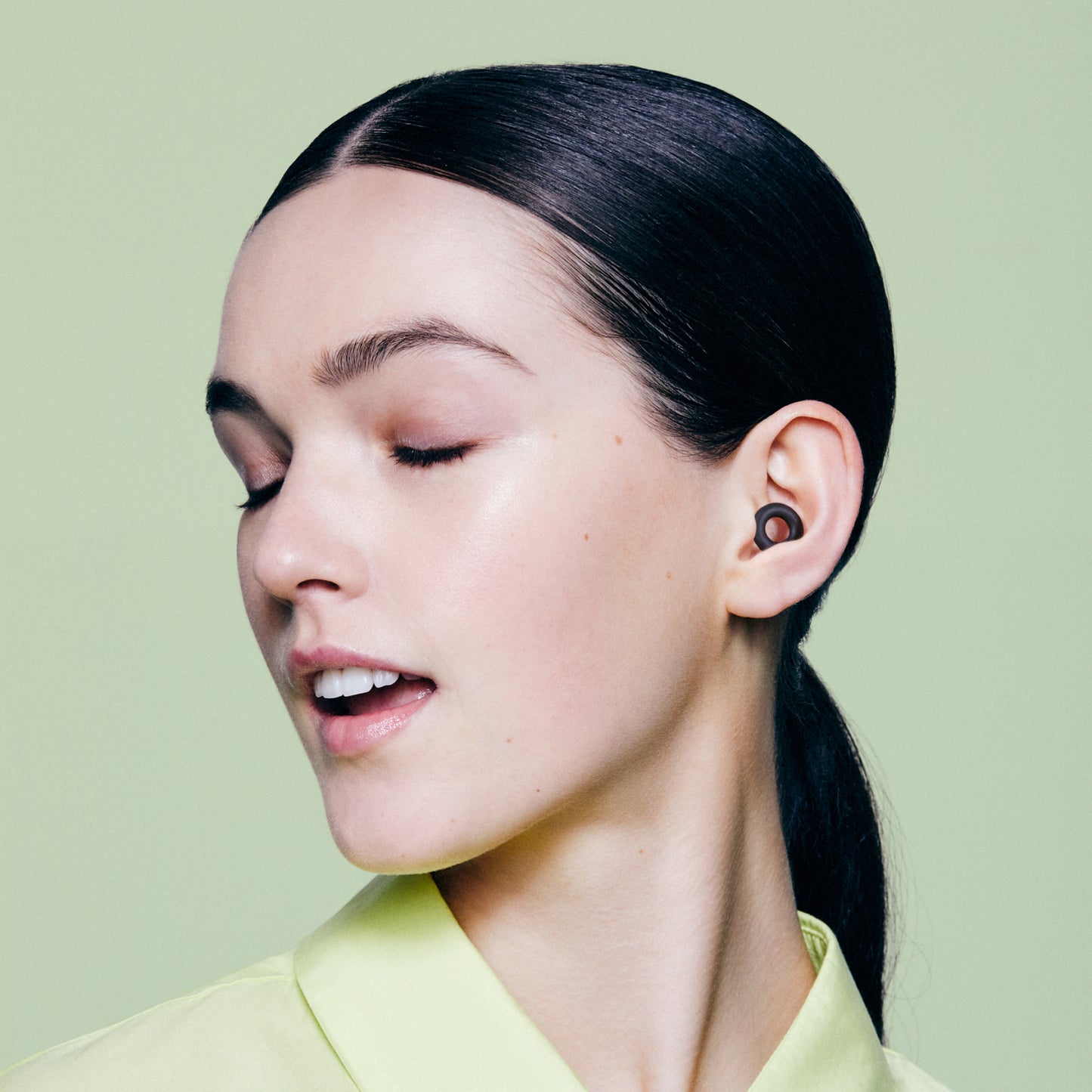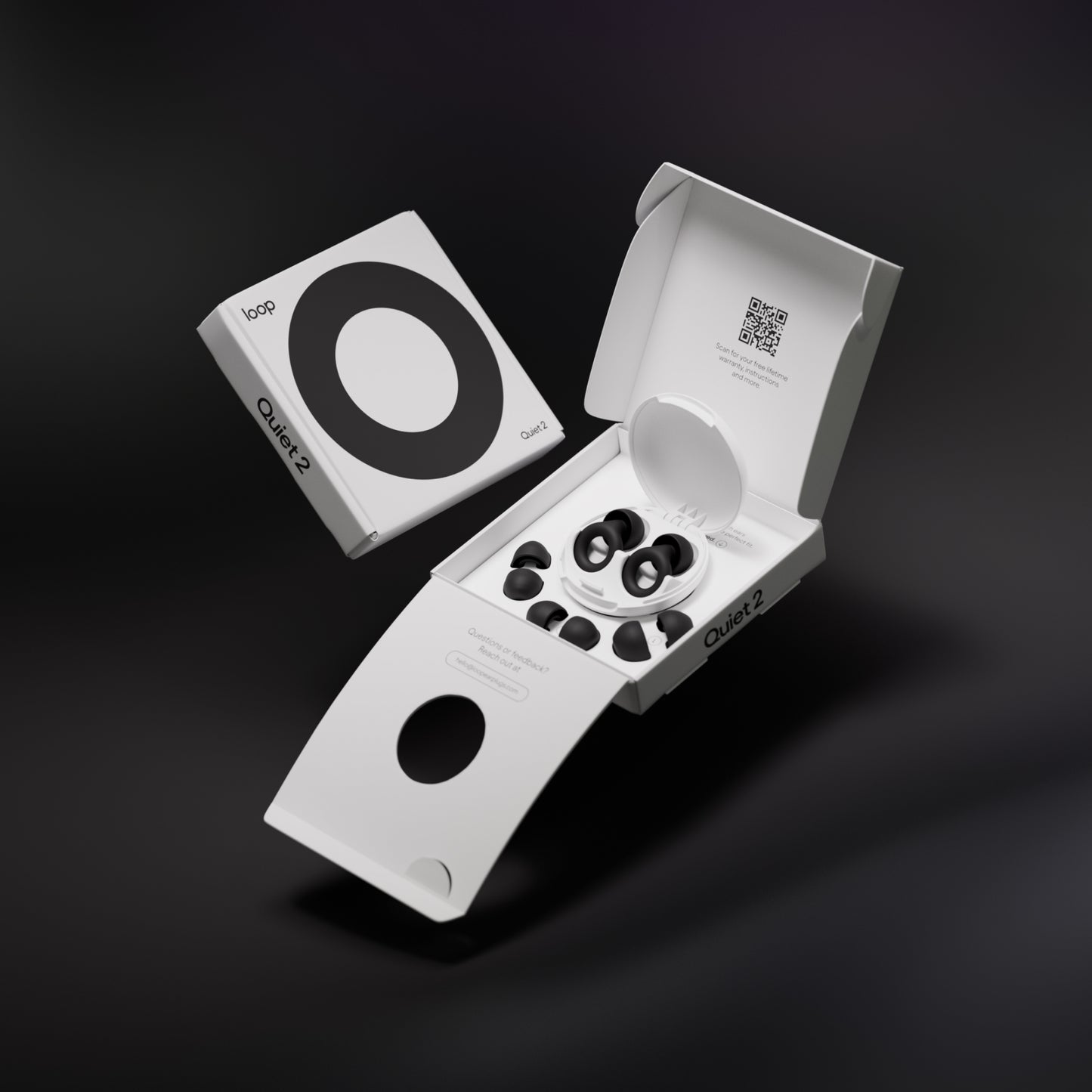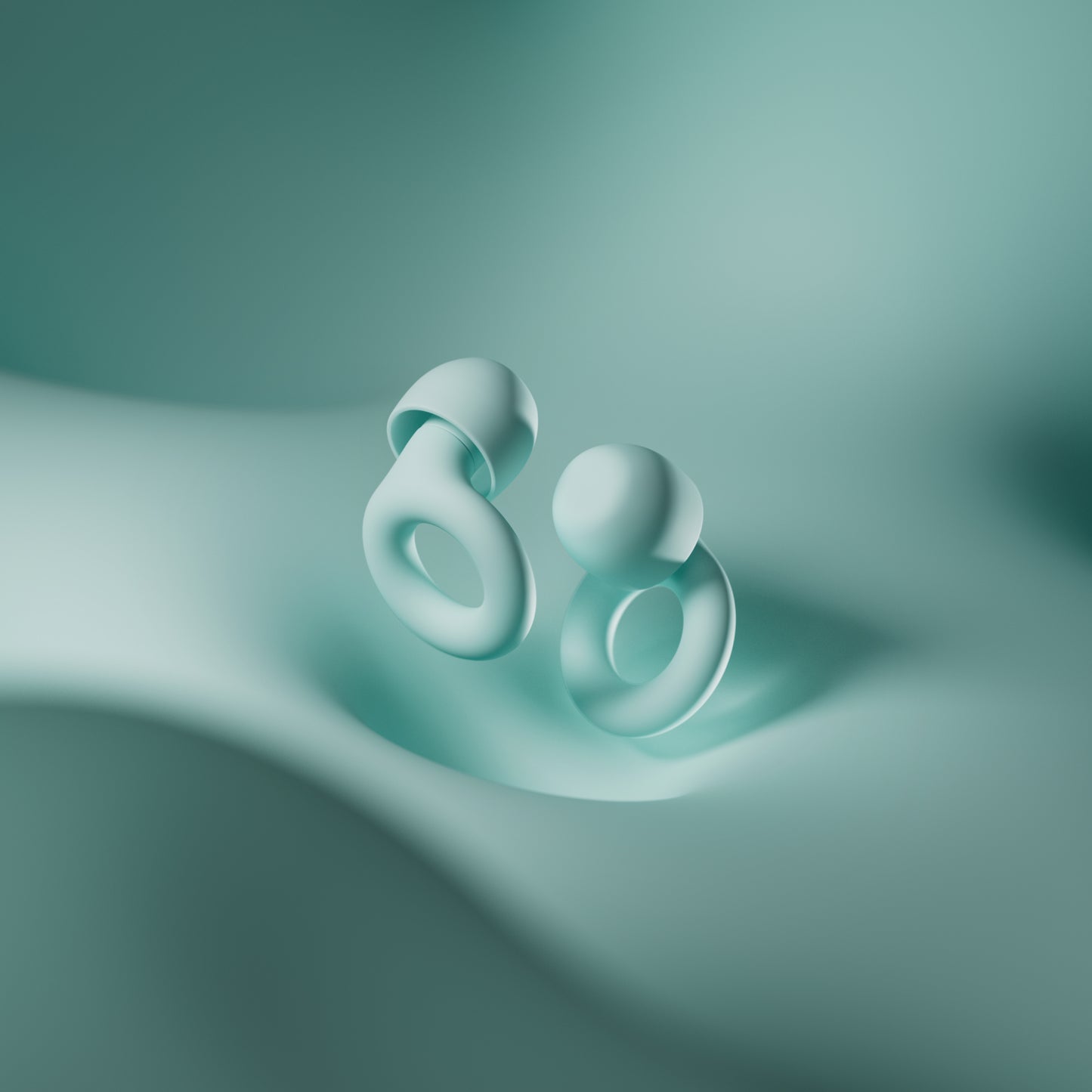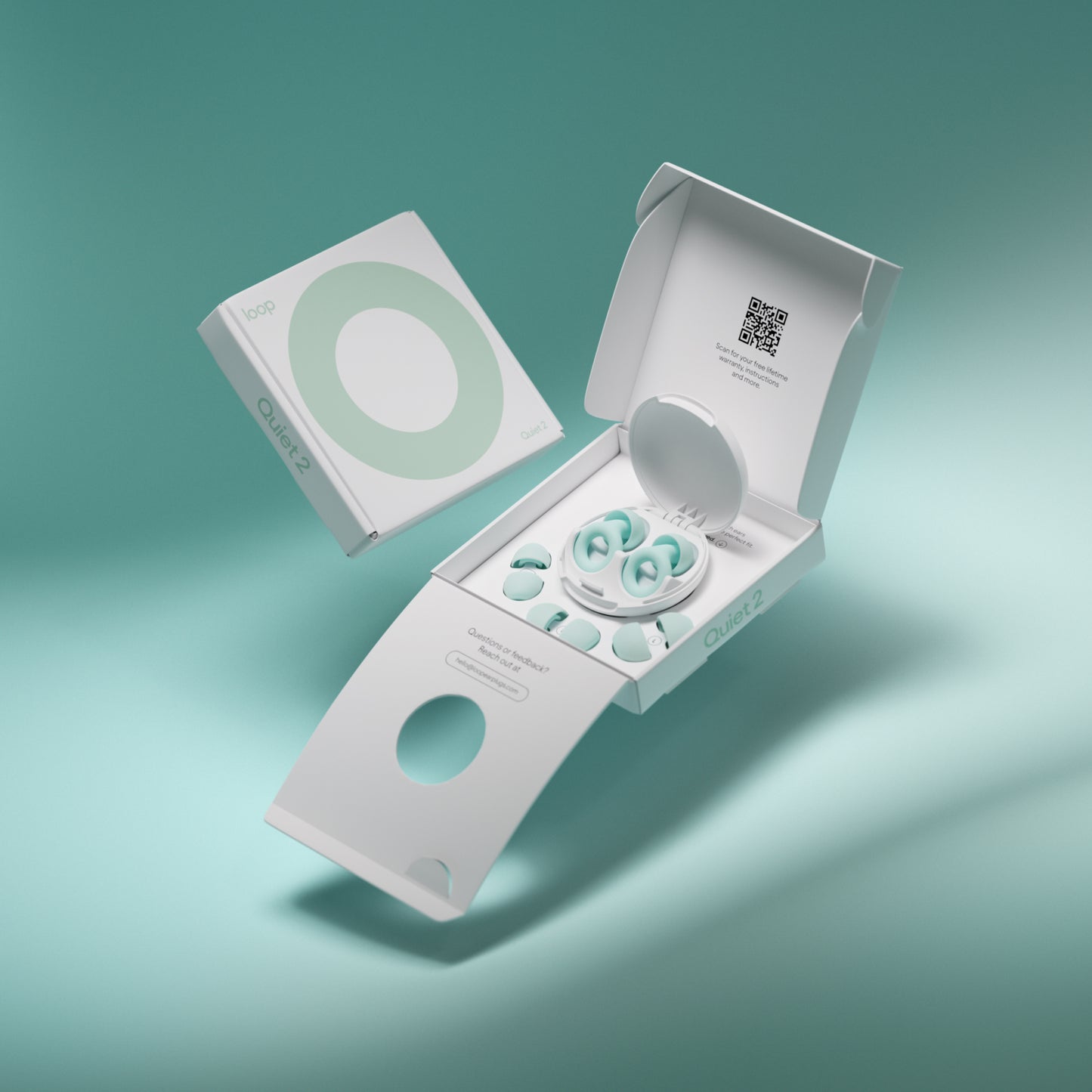Key takeaways
- White noise is a mixture of sound frequencies played together at an equal intensity to create a noise that can drown out background noise
- Pink noise and brown noise work in a similar way, but create slightly different sounds that you may prefer
- All of these noises may be beneficial when it comes to getting a better night’s sleep and improving your focus and concentration
- It’s important to listen to white noise at a low level, as sustained exposure to loud noises can damage your hearing
Have you heard of white noise? If you struggle to get to sleep or find it hard to focus in a busy office, you may benefit from white noise. But what’s white noise? How does it work? Does white noise help you sleep? And how can it be used to boost your productivity? Let’s take a deep dive into everything you need to know.

What is white noise?
Let’s start at the beginning. According to the Mirriam-Webster Dictionary, there are two white noise meanings:
- An even mixture of sound waves extending over a wide frequency range
- A constant background noise, especially one that drowns out other sounds
So far, so complicated. We might need to break that down a little further!
The term ‘white noise’ refers to a particular noise that contains all of the frequencies of sound that the human ear can hear. That means all frequencies between 20 hertz and 20,000 hertz. They’re all played together at an equal intensity, to create a hissing, whirring or ‘shhh’ noise that’s sometimes described as being similar to TV static. It’s also similar to the noise an untuned radio makes, as well as a hairdryer, a vacuum cleaner, or the sound of an air conditioner.
It’s called white noise as it works in a similar way to white light. White light is a type of light that blends together all of the colors in the color spectrum. As white light is a combination of all the wavelengths of color, white noise is a combination of all the frequencies of sound.
What does white noise do?
White noise is frequently used to mask other sounds. If you have noisy neighbors or live beside a busy street, you might find it hard to drift off because your brain keeps focusing on all the different noises you can hear.
If you listen to white noise, it can help to drown out all the other sounds, helping you get to sleep faster or focus more intently at work. There are a few different ways you can listen to white noise, most commonly by using a white noise machine or by listening on an app.
How does white noise work?
Dropping off to sleep faster sounds great, but how does adding more noise into the mix help? Surely it just makes it even harder to fall asleep?
Well, not quite. That’s the clever thing about white noise. When there are one or two sounds, your brain can pick them out. That’s a good thing when you’re having a conversation with friends or trying to focus on a presentation at work. But it becomes a problem when you’re lying in bed and can’t focus on anything but the thudding bass leaking through the wall as your neighbor has a party, or the sound of people chatting outside your window.
But something funny happens when you mix many sounds together. When there are lots of sounds all at once, it suddenly becomes difficult for your brain to pick out any one noise in particular. That means your brain can relax, without trying to focus on individual sounds – and you may just end up getting a better night’s sleep. Ahhh, peace and quiet!
What are the effects of white noise on the brain?
White noise isn’t treated particularly differently by your brain than any other type of noise – it just seems that it’s easier for your brain to block out.
One study, looking into the brain’s response to tone, click and white noise stimuli, found that white noise induces less brain activity than pure tones, but more activity than clicking sounds did. That suggests the brain thinks that white noise is less important than pure tones – one single sound – but more important than a random noise like clicking.
That could be why white noise helps some people to fall asleep. The brain understands the white noise is more important than the random sounds (a clicking noise, people talking, music playing or car engines revving), but it’s not important enough to keep you hyper focused on it, allowing you to fall asleep faster.
Another analysis suggested that white noise has no general effect on the cognitive function of the brain, but it does affect our concentration depending on the context in which we listen to it. It can help the brain’s auditory center to focus, which can improve concentration and memory – which is why so many people swear by white noise when it comes to sleeping and studying!
Brown noise vs white noise vs pink noise
Some researchers recommend using pink noise or brown noise instead of white noise.
Like white noise, pink noise is a combination of different noises from across the sound spectrum, containing all frequencies between 20 Hz and 20,000 Hz. However, it reduces the power of sounds at higher frequencies and increases the power of sounds at lower frequencies to create a more even sound. It could be compared to steady rainfall, the lapping of waves on a beach, or water trickling down a waterfall.
While some people find white noise soothing, others find it unsettling. Pink noise is more widely considered to be therapeutic.
A small 2017 study looked at whether pink noise helped memory and recall in older adults. The study involved 13 adults aged 60 and older, who took a memory test in the evening before bed two consecutive nights. On both nights, they went to sleep wearing an electrode cap and headphones, and upon waking they repeated the memory test. One night, they listened to pink noise while they slept, and no sound was played on the other night.
It was found that the participants performed three times better in the memory task after listening to pink noise throughout the night compared to their previous night’s test, while the test results didn’t improve as much on the night they didn’t listen to anything. That suggests that, when listened to at the right time, pink noise could be a good aid for study and work.
Research from 2020 backed up these findings. Participants were exposed to different types of noise: red, pink and white, as well as a quiet environment. While being exposed to each type of noise, the participants were tested on their:
- psychomotor speed (speed of thinking and the speed of movement related to cognitive function)
- continuous performance (sustained and selective attention)
- executive function (the ability to plan ahead and set goals)
- working memory
For all three colors of noise, participants performed much better on the psychomotor speed test compared to the quiet environment, while pink noise gave the only significantly positive result for the continuous performance test. All of the colors showed improvement compared to the quiet environment when it came to working memory – although white noise showed the most improvement. Finally, red and pink noise increased the participants’ ability to make good judgements.
So, it sounds like pink noise is a great choice for improved focus, memory and decision-making. Like white noise, it can also help you to drift off to sleep faster.
Brown noise – also called red noise – works in a similar way to both white and pink noise, but low-frequency sounds are more intense than in the other two types of noise. Most of the higher frequencies that can make white noise sound harsh, or distracting for some people, are removed. That results in a sound that’s more pleasant to listen to.
Brown noise is much deeper than white noise and it sounds like a rumbling noise. It could be compared to a heavy rainfall or a strong power shower.
When it comes to white noise vs brown noise, it really comes down to personal preference. As already mentioned, there is some research to show that brown or red noise can be beneficial for decision-making, memory and psychomotor speed, and it’s also been shown that it can be beneficial for people with tinnitus. There is not, however, as much research into how brown noise affects sleep.

White noise benefits
So should you use white noise? Well, white noise (as well as pink and brown noise) does seem to have some benefits.
1. Mask sounds
The primary benefit of any type of noise, whether it’s white, pink or brown, is that it helps to mask other noises that may be distracting. If you have trouble sleeping or find it hard to stay focused at work, then it’s worth giving white, brown or pink noise a try to see if it works for you.
2. Fall asleep faster
Ever found yourself lying awake for hours counting sheep? White noise could help you get to sleep faster. One study found that participants fell asleep 38% faster when listening to white noise compared to when they were simply exposed to normal environmental noise.
3. Improved sleep quality
Getting to sleep is one thing, but managing to stay asleep throughout the night is another matter entirely. Poor sleep quality is bad news all round. It’s associated with increased stress, depression, anxiety, poorer mental function, and much more. The World Health Organization (WHO) estimates that 25% of people suffer from disturbed sleep due to environmental noise.
If you’re one of those 25%, white noise could be the solution! One study found that the use of white noise significantly improved sleep in participants who previously complained about having trouble sleeping due to environmental noise factors – and the study was carried out in New York, surely one of the world’s noisiest cities!
4. Gain more focus
Can white noise help you focus? Some people swear by it for studying or working and it’s long been recommended as for people with ADHD, with research showing that white noise can improve concentration and focus in people with ADHD, as it blocks out distracting background noises.
Another study has shown that it also has some cognitive benefits for neurotypical people. White noise was played into a private office space at two different levels. At 65 decibels, white noise improved working memory but resulted in more stress for the participants, while at 45 decibels, the white noise improved the participants’ attention, accuracy and speed, and enhanced their creativity, while resulting in lower stress levels.
Are there any downsides to white noise?
There are, of course, always two sides to every story. When it comes to white noise to help sleep, there are some experts who suggest that it may do more harm than good.
The main concern is that, while using white noise as a sleep aid may help you to drift off faster, it may not allow your auditory system to fully shut down overnight. Listening is an active process that requires your brain to do some work, even in the case of white noise. That means your auditory system may not get a chance to rest and regenerate overnight. However, more research is needed into the impact of this.
Another issue is that white noise could impact your auditory system’s ability to function, over time. One study found that when used for long periods of time for sleep or for managing tinnitus, white noise can impair the central auditory system in the brain. It found that white noise can make the brain less sensitive to individual sounds over time, meaning that the brain may end up finding it more difficult to block our irrelevant sounds and we might find it harder to focus on particular sounds when it’s noisy, like trying to have a conversation when there is a lot of background noise.
This study suggests that, while white noise can be beneficial in the short-term, it might not be such a good idea in the long term.
The other issue with white noise is that you could run the risk of hearing damage if you don’t control the volume. You risk possible hearing damage after being exposed to sounds that are 80 decibels or over for more than 8 hours without hearing protection. That level of noise is roughly equivalent to a busy downtown street – so if you’re trying to mask the sound of a busy street outside, it could be tempting to turn your white noise machine or app up even louder than that.
So, does white noise help you sleep? It can do, but it’s important to be aware of how loud you’re listening to it! How loud should white noise be, then? Ensure you’re listening at levels no higher than 50 decibels, which is roughly equivalent to the level of a quiet refrigerator humming or a quiet conversation.
You may also want to use earplugs for additional protection. Earplugs like Loop Quiet offer up to 24 decibels of noise reduction, reducing the noises that keep you up at night while protecting your ears. You might even find that you can fall asleep with the earplugs alone, and don’t need to use white noise after all.
Loop Earplugs
Quiet 2
Share
Making white noise work for you
White noise can be beneficial for some people, whether it’s used to fall asleep faster – and stay asleep – or as a study aid. If you find it hard to fall asleep or need to boost your productivity while you’re working or studying, white noise could be beneficial for you.
Who knows, white noise combined with a good sleep hygiene routine could just be your new best friend, while it could work wonders for you to find focus in your job!
You can even try out different noises to discover whether white, pink or brown works best for you – just remember that you should listen at a low enough volume that it won’t damage your hearing!
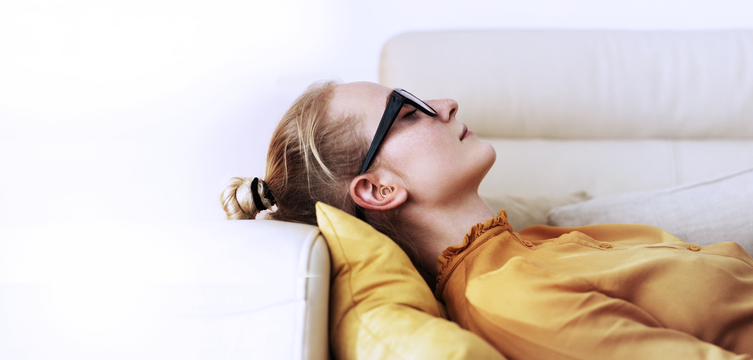
How to go to sleep faster
We’ve put together a list of eight tips on how to sleep faster so that you can finally doze off and get some well-ear...

What To Look For In Noise Reduction Earplugs
In this blog post, we’re going to take a closer look at noise cancellation. What exactly is it? How can it help your ...

How To Stay Focused At Work and Improve Concentration
Having trouble concentrating whilst in a bustling office? Discover our top tips for staying focused at work so you ca...
























